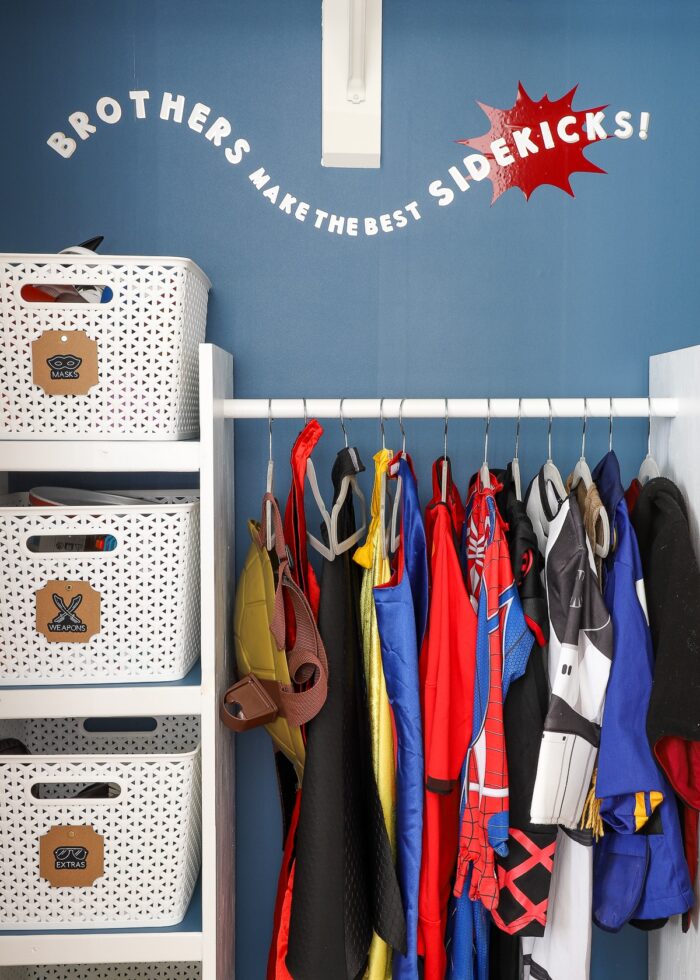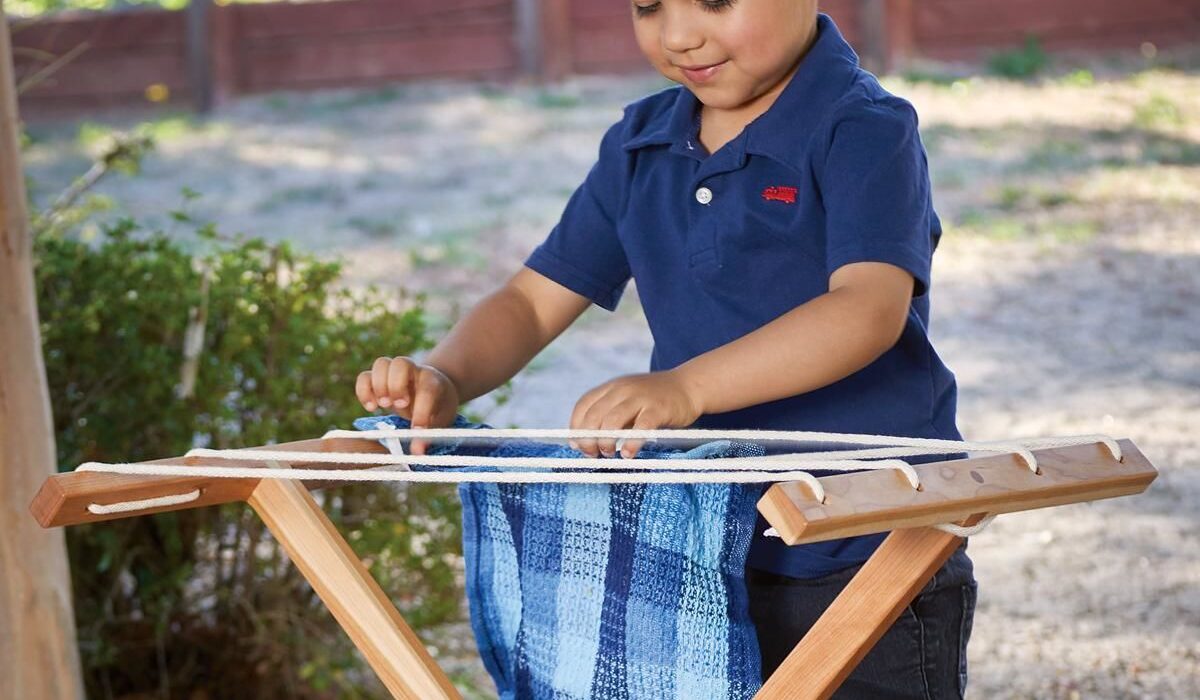Keeping toddlers’ clothes in good shape can be a challenge. They grow fast and play hard, causing wear and tear.
Parents often struggle to maintain the quality of their kids’ clothes. It can be frustrating to see favorite outfits quickly ruined. But, with a few simple steps, you can extend the life of your toddler’s clothes. This not only saves money but also reduces waste.
In this blog post, we’ll share practical tips to help you achieve this. From smart washing techniques to choosing the right fabrics, these tips will keep those tiny outfits looking fresh for longer. Let’s dive in and discover how to make your toddler’s clothes last longer.
Choosing Quality Fabrics
Choosing quality fabrics is essential for making toddlers’ clothes last longer. High-quality materials ensure durability and comfort, providing better value for money. Let’s explore some options for durable and eco-friendly fabrics.
Durable Materials
For long-lasting toddler clothes, select fabrics known for their strength.
- Cotton: A popular choice for its softness and breathability. Look for organic cotton which is more durable.
- Linen: Strong and durable, perfect for warm weather. It gets softer with each wash.
- Denim: Known for its durability and resistance to wear and tear. Ideal for pants and jackets.
- Wool: Great for winter clothes. It is warm, durable, and naturally stain-resistant.
Eco-friendly Options
Sustainable fabrics are kind to the environment and gentle on your toddler’s skin.
- Bamboo: Soft, breathable, and hypoallergenic. It also has natural antibacterial properties.
- Hemp: Extremely durable and gets softer with each wash. It’s also resistant to mold and UV rays.
- Tencel: Made from wood pulp, it is soft, breathable, and biodegradable.
- Recycled Fabrics: Use materials like recycled polyester. They reduce waste and are often blended with other fibers for durability.
Choosing the right fabric is key to extending the life of your toddler’s clothes. Whether you opt for durable materials or eco-friendly options, you can ensure both comfort and longevity.

Credit: www.marymaxim.com
Proper Washing Techniques
Proper washing techniques can significantly extend the lifespan of toddlers’ clothes. By adopting gentle methods and using the right products, you can keep their outfits looking new and fresh for longer. Let’s dive into some key practices.
Gentle Detergents
Using gentle detergents is crucial for maintaining the quality of toddlers’ clothes. Regular detergents can be harsh and cause fabric wear and tear. Opt for detergents labeled as “mild” or “gentle.” These are less likely to contain strong chemicals that can damage fabrics.
- Check the detergent label for phrases like “baby-safe” or “hypoallergenic.”
- Avoid detergents with bleach or brighteners.
- Consider using liquid detergents as they dissolve better in water.
Cold Water Wash
Washing clothes in cold water helps prevent shrinking and color fading. Hot water can cause fabrics to weaken over time, reducing the garment’s longevity.
- Set your washing machine to a cold water cycle.
- Separate clothes by color to avoid dye transfer.
- Use a gentle cycle to reduce friction between garments.
Cold water is just as effective at cleaning as warm water, especially when combined with a good detergent. These simple steps can make a big difference in keeping your toddler’s clothes in great shape.
| Washing Tips | Benefits |
|---|---|
| Use gentle detergents | Reduces fabric wear and tear |
| Wash in cold water | Prevents shrinking and color fading |
| Gentle cycle | Minimizes garment friction |
Stain Removal Tips
Stains can ruin your toddler’s clothes quickly. With some simple tips, you can keep those tiny outfits looking fresh and new. Learn the best methods to remove stubborn stains and extend the life of your toddler’s wardrobe.
Natural Solutions
Natural solutions can be gentle on fabric and effective on stains. Baking soda is a great option. Make a paste with water and apply to the stain. Let it sit for 15 minutes before rinsing. Another option is white vinegar. Soak the stain in a mixture of one part vinegar and two parts water. Rinse after 30 minutes.
Pre-treating Stains
Pre-treating stains is crucial for better results. Act quickly when a stain occurs. Blot the stain with a clean cloth to remove excess. Avoid rubbing, as it can set the stain deeper. Use a stain remover or liquid detergent directly on the stain. Let it sit for at least 10 minutes before washing.
Drying Methods
Ensuring your toddler’s clothes last longer involves using the right drying methods. Proper drying can prevent damage and maintain the quality of the fabric. In this section, we will explore two effective drying methods: Air Drying and Low Heat Settings.
Air Drying
Air drying is one of the best ways to preserve your toddler’s clothes. It is gentle and helps to maintain the fabric’s integrity. Follow these steps to air dry clothes:
- Hang clothes on a clothesline or drying rack.
- Avoid direct sunlight to prevent colors from fading.
- Ensure there is enough space between clothes for air circulation.
This method is energy-efficient and prevents shrinkage, keeping your child’s clothes in great condition.
Low Heat Settings
Using low heat settings in the dryer is another way to protect your toddler’s clothes. High heat can damage fabrics and cause shrinkage. To use low heat settings effectively, follow these tips:
- Set your dryer to a low or delicate heat setting.
- Remove clothes promptly to avoid wrinkles.
- Use dryer balls to reduce drying time and soften fabrics.
This method is quicker than air drying and still protects delicate fabrics from damage.
Storage Solutions
Effective storage solutions can greatly extend the life of toddlers’ clothes. Proper organization and careful handling help keep clothes in good condition. Let’s explore some practical tips for storing toddlers’ clothes.
Organized Closets
An organized closet makes finding clothes easier. Use shelves and drawers to separate different clothing items. Label each section for quick access. This prevents clothes from being pulled out and tossed around.
Install low-hanging rods for easy reach. Toddlers can learn to hang their clothes. This reduces wear and tear from repeated folding. Use clear bins for small items like socks and hats. Visibility helps in keeping things tidy.
Seasonal Rotation
Rotate clothes based on the season. Store off-season clothes in vacuum-sealed bags. This saves closet space and keeps clothes fresh. Use under-bed storage boxes for easy access. Label these boxes with the season and size.
Check clothes for damage before storing. Repair any tears or loose buttons. Clean clothes before storing to prevent stains from setting. This ensures that clothes are ready for the next season.
Repairing Clothes
Repairing clothes is a great way to extend the life of toddlers’ outfits. It saves money and reduces waste. Simple fixes can make a big difference. Here are some easy ways to repair and maintain your child’s clothes.
Simple Sewing
A needle and thread can work wonders. Start with small tears or loose buttons. Sew them back securely. You don’t need to be an expert. Basic stitches are often enough. Hemming pants or dresses can also help. Kids grow fast. Adjusting the hem can make clothes last longer.
Iron-on Patches
Iron-on patches are an easy fix for holes and worn areas. Choose fun designs that your child likes. Follow the instructions on the patch package. Typically, you place the patch on the fabric and press with a hot iron. This method is quick and requires no sewing. Patches can also be used to cover stains or add a unique touch to plain clothes.
Upcycling Ideas
Upcycling old clothes into new items can save money and reduce waste. It’s a creative way to make toddlers’ clothes last longer. Let’s explore some fun upcycling ideas that can transform old garments into new treasures.
Creative Projects
Get creative with your toddler’s old clothes by turning them into something new. Here are a few projects to get you started:
- Quilts: Cut old clothes into squares. Sew them together to make a cozy quilt.
- Pillows: Use fabric from old shirts to create cute pillows for your toddler’s room.
- Tote Bags: Turn a worn-out t-shirt into a handy tote bag for toys or books.
These projects are easy to do and give a new life to old clothes.
Repurposing Old Clothes
Repurposing old clothes involves changing their use. Here are some ideas:
- Rags: Cut old clothes into strips to use as cleaning rags.
- Stuffed Animals: Use fabric from old clothes to sew small stuffed toys for your toddler.
- Hair Accessories: Make headbands or hair ties from leftover fabric.
Repurposing extends the life of clothes and reduces waste. Plus, it’s fun and rewarding!
Buying Second-hand
Buying second-hand clothes for toddlers can be a smart choice. It saves money and is eco-friendly. Pre-owned clothes often have a lot of life left in them. You can find unique pieces at a fraction of the price of new clothes. Let’s explore two great places to find second-hand toddler clothes: thrift stores and online marketplaces.
Thrift Store Finds
Thrift stores are treasure troves for budget-friendly toddler clothes. You can find many options in good condition. Look for well-known brands that last longer. Check for any stains or damage before buying. Some thrift stores have sales days with extra discounts. Shopping at thrift stores can be a fun adventure. You might find clothes that look new but cost a lot less.
Online Marketplaces
Online marketplaces are another excellent source for second-hand toddler clothes. Websites like eBay and Poshmark have many listings. You can filter by size, brand, and condition. Read the seller reviews to ensure good quality. Many parents sell clothes their kids have outgrown. These clothes are often gently used. You can also join local Facebook groups. These groups often have parents selling toddler clothes. Online shopping allows you to compare prices easily.
Proper Sizing
Ensuring proper sizing is essential for making toddlers’ clothes last longer. Clothes that fit well offer comfort and durability. Proper sizing helps avoid wear and tear. This section will explore two key aspects of proper sizing: Avoiding Tight Fits and Room to Grow.
Avoiding Tight Fits
Tight clothes can cause discomfort and restrict movement. They can also wear out faster due to constant stretching. To avoid tight fits, follow these tips:
- Measure your toddler regularly.
- Check the size chart before buying.
- Opt for clothes with some stretch.
Using the right size ensures your toddler can play and move freely. This helps the clothes last longer. Tight fits often lead to split seams and worn-out fabric.
Room To Grow
Buying clothes with some room to grow can be a smart choice. This ensures longer use and better value for money. Here are some strategies:
- Choose clothes with adjustable features.
- Look for elastic waistbands and cuffs.
- Buy slightly larger sizes.
Adjustable features like buttons or drawstrings help the clothes fit longer. Elastic waistbands accommodate growth spurts. Slightly larger sizes allow your toddler to grow into the clothes. This reduces the frequency of buying new clothes.
| Feature | Benefit |
|---|---|
| Adjustable buttons | Longer fit duration |
| Elastic waistbands | Accommodates growth |
| Larger sizes | More room to grow |
Giving your child room to grow ensures comfort and extended use. It also means fewer shopping trips and less money spent on clothes.

Credit: www.youtube.com
Layering Techniques
Layering techniques can significantly extend the life of your toddler’s clothes. By combining different clothing items, you can create various outfits suitable for different seasons and occasions. This approach not only maximizes the usage of each piece but also keeps your little one comfortable and stylish throughout the year.
Seasonal Layers
One effective way to make clothes last is by layering them according to the season. Start with a basic layer such as a cotton t-shirt or onesie. These are soft and comfortable against your toddler’s skin. During the colder months, add a long-sleeve shirt or sweater. This keeps your child warm without the need for bulky winter clothes.
For outdoor activities, consider adding a light jacket or windbreaker. These are perfect for fall and spring. They provide an extra layer of warmth and can be easily removed if your child gets too hot. In winter, use a heavy coat on top of the layers. This allows for easy adjustment to indoor and outdoor temperatures.
| Season | Base Layer | Middle Layer | Outer Layer |
|---|---|---|---|
| Spring | Cotton T-shirt | Long-sleeve shirt | Light Jacket |
| Summer | Onesie | N/A | N/A |
| Fall | Cotton T-shirt | Sweater | Windbreaker |
| Winter | Onesie | Long-sleeve shirt | Heavy Coat |
Versatile Pieces
Invest in versatile pieces that can be worn in multiple ways. Neutral colors like grey, white, and navy can mix and match with various outfits. This makes it easier to create different looks without needing a large wardrobe.
Consider buying adjustable clothing. Items like pants with adjustable waistbands or shirts with roll-up sleeves can grow with your toddler. These pieces can be used for a longer period, saving you money in the long run.
- Neutral colored tops and bottoms
- Adjustable waistbands
- Roll-up sleeves
- Multi-purpose jackets
Another great tip is to use multi-purpose jackets. A jacket that works for both rain and wind can be used year-round. This reduces the need to buy multiple outerwear items.
Following these layering techniques ensures your toddler stays comfortable. At the same time, you maximize the lifespan of their clothes.
Rotating Outfits
Rotating outfits among toddlers can extend their wardrobe life. Mix and match different pieces to create new looks, reducing wear and tear.
Rotating Outfits is a strategy that helps make toddlers’ clothes last longer. By rotating their clothes, you can evenly distribute the wear and tear. This makes each piece of clothing stay in good condition for a longer time.Weekly Plans
Creating a weekly plan for your toddler’s outfits can be helpful. Plan out what they will wear each day of the week. This way, no single outfit gets worn too often. It also saves time in the morning. You won’t have to decide what to put on your toddler each day.Mix And Match
Mix and match different pieces of clothing. This creates new outfits from the clothes they already have. Pair different tops with various bottoms. This not only makes the wardrobe seem bigger but also ensures even wear. It also keeps the outfits looking fresh and new. Regularly switch out the different clothing items. This way, no single item gets worn out quickly. This simple practice can make a big difference in the longevity of your toddler’s clothes.Avoiding Overwashing
Making toddlers’ clothes last longer can be challenging. One key strategy to achieve this is avoiding overwashing. Overwashing can wear out fabrics quickly, causing them to fade, shrink, or lose shape. Reducing how often you wash your toddler’s clothes can significantly extend their lifespan. Below are some practical tips to help you avoid overwashing and ensure your child’s clothes stay in great condition for longer.
Wear Multiple Times
Not every outfit needs washing after a single wear. Encourage your toddler to wear clothes multiple times, especially if they are not visibly dirty. This practice reduces the stress on fabrics and preserves their quality. A good rule of thumb is to reserve washing for times when clothes are genuinely dirty or smelly.
Spot Cleaning
Spot cleaning is an effective way to maintain cleanliness without washing the entire garment. Use a damp cloth or a gentle stain remover to clean small spots and spills. This method is particularly useful for items like jackets, jeans, and other outerwear that do not need frequent washing.
| Item | Recommended Wash Frequency |
|---|---|
| Jeans | Every 5-6 wears |
| Sweaters | Every 4-5 wears |
| Jackets | Every 7-8 wears |
By adopting these simple habits, you can extend the life of your toddler’s clothes, saving money and reducing waste. Remember, less frequent washing is better for both the clothes and the environment.
Teaching Kids Care
Teaching kids to care for their clothes is essential. It helps prolong their lifespan and instills responsibility. Kids can learn to respect their belongings, making them last longer.
Involving Toddlers
Involve toddlers in simple tasks. Let them help with folding clothes. They can match socks or place items in drawers. This makes them feel important and teaches organization.
Make it fun. Turn it into a game. Praise them for their efforts. This encourages them to keep helping. They’ll learn to appreciate their clothes.
Basic Cleaning Habits
Teach basic cleaning habits. Show them how to remove small stains. Use a damp cloth and mild soap. Explain the importance of acting quickly. Stains set if left too long.
Teach gentle handling. No tugging or pulling on buttons or zippers. Demonstrate careful hanging and folding. Make these routines part of daily life. Their clothes will look better and last longer.

Credit: thehomesihavemade.com
Frequently Asked Questions
How Can I Prevent Toddlers’ Clothes From Wearing Out Quickly?
Choose durable fabrics and wash clothes in cold water. Avoid over-drying to extend their lifespan.
What Are The Best Fabrics For Long-lasting Toddler Clothes?
Cotton blends and denim are good choices. They are durable and withstand frequent washing.
How Often Should I Wash Toddlers’ Clothes?
Wash them only when necessary. Frequent washing can wear out the fabric faster.
Can I Repair Small Holes In Toddlers’ Clothes?
Yes, you can use fabric patches or sew small holes to make clothes last longer.
How Do I Store Out-of-season Toddler Clothes?
Store them in a cool, dry place. Use airtight containers to protect from dust and pests.
Conclusion
Making toddlers’ clothes last longer is simple with these tips. Choose quality fabrics. Wash clothes gently. Mend small tears quickly. Rotate outfits to reduce wear. Store clothes properly. These actions save money and keep clothes looking new. Start implementing these tips today.
Your wallet and wardrobe will thank you. Happy parenting!







